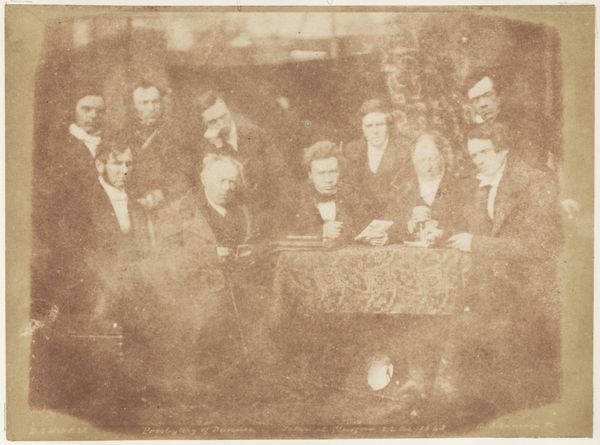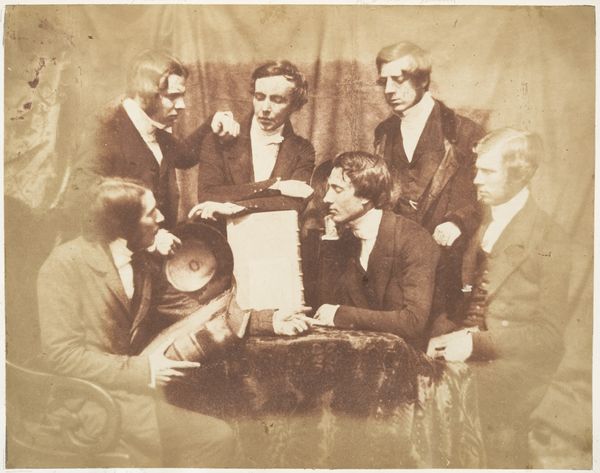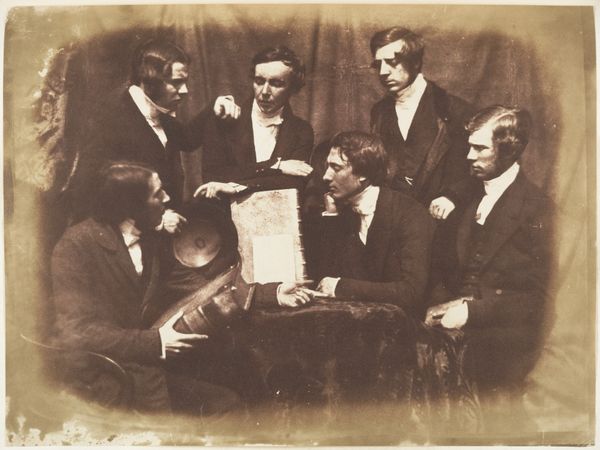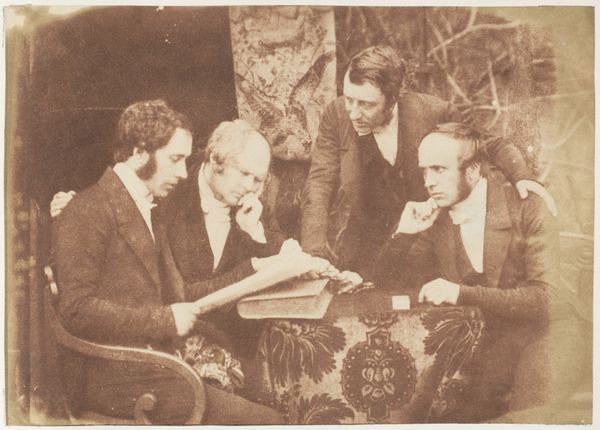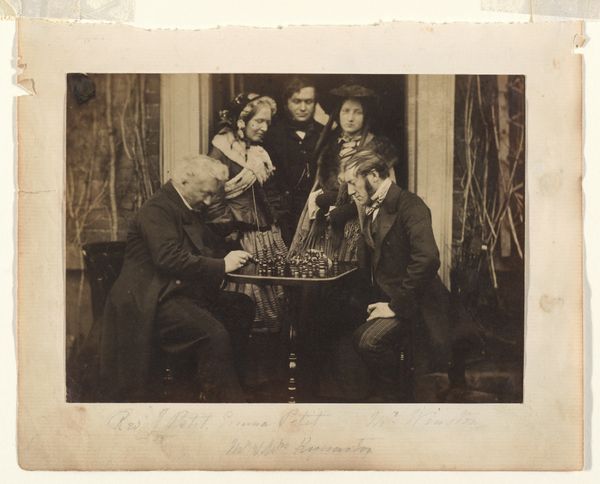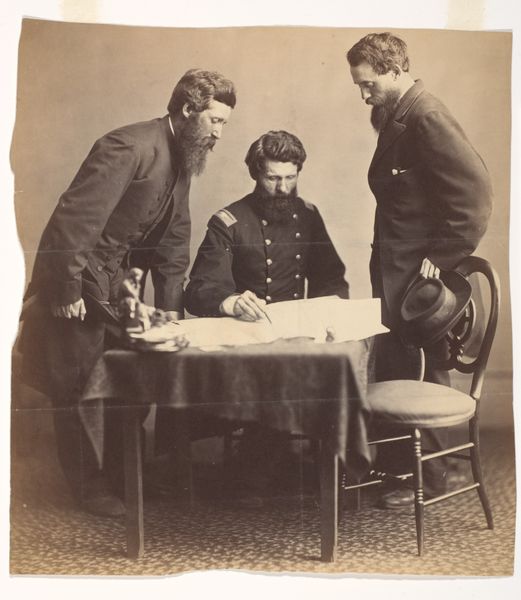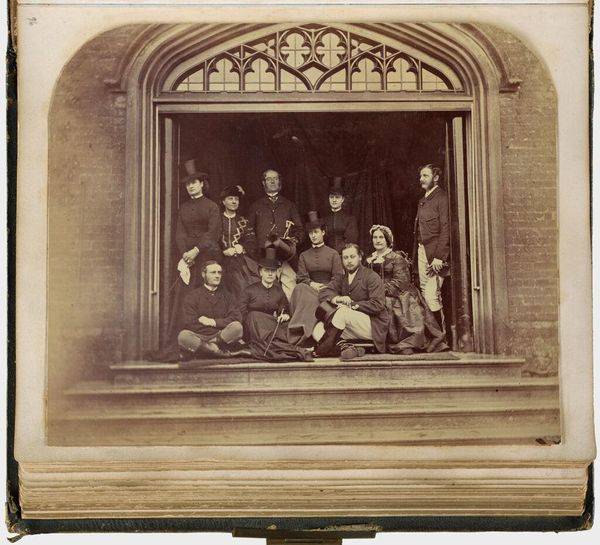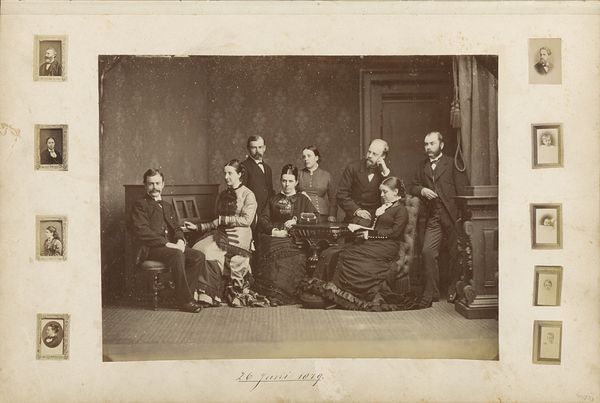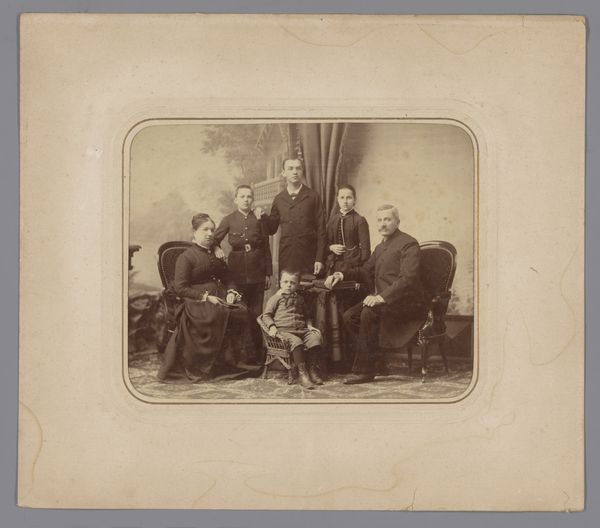
Study for the Disruption Picture: Signing of the Deed of Demission 1843
0:00
0:00
print, photography, gelatin-silver-print
#
portrait
#
print photography
# print
#
photography
#
historical photography
#
group-portraits
#
romanticism
#
gelatin-silver-print
Dimensions: 7 3/4 x 5 3/4
Copyright: Public Domain
Editor: This gelatin-silver print, titled "Study for the Disruption Picture: Signing of the Deed of Demission," was created in 1843 by Hill and Adamson. The composition, with its huddled figures around a table, feels very heavy and serious. What do you see in this piece beyond the initial solemnity? Curator: What I see is a potent depiction of resistance and self-determination. This photograph captures a pivotal moment in Scottish history: the Disruption of 1843, when ministers broke away from the Church of Scotland. The signing of the Deed of Demission symbolizes a profound act of defiance against state interference in religious affairs. It is crucial to understand that their actions reflected a wider struggle for individual and collective autonomy against oppressive systems. Consider the courage it took for these individuals to risk everything for their convictions. Editor: That's fascinating. So, it's not just a historical document but a visual representation of political and religious protest? Curator: Precisely. This image invites us to examine the power dynamics at play, to question the legitimacy of established authority, and to recognize the enduring importance of dissent. Who are these men, and what societal norms were they challenging through their very act of secession? Editor: It makes me think about current debates on freedom of expression and the role of institutions. It is empowering to see this scene now through that perspective. Curator: Indeed. This photograph not only allows us to understand this important moment in history, but it encourages a dialogue between past struggles for self-determination, and contemporary social justice movements, as well as to challenge accepted dogmas and entrenched beliefs today. Editor: I’ll certainly never look at it in the same way again. Thanks for sharing your insights!
Comments
No comments
Be the first to comment and join the conversation on the ultimate creative platform.
